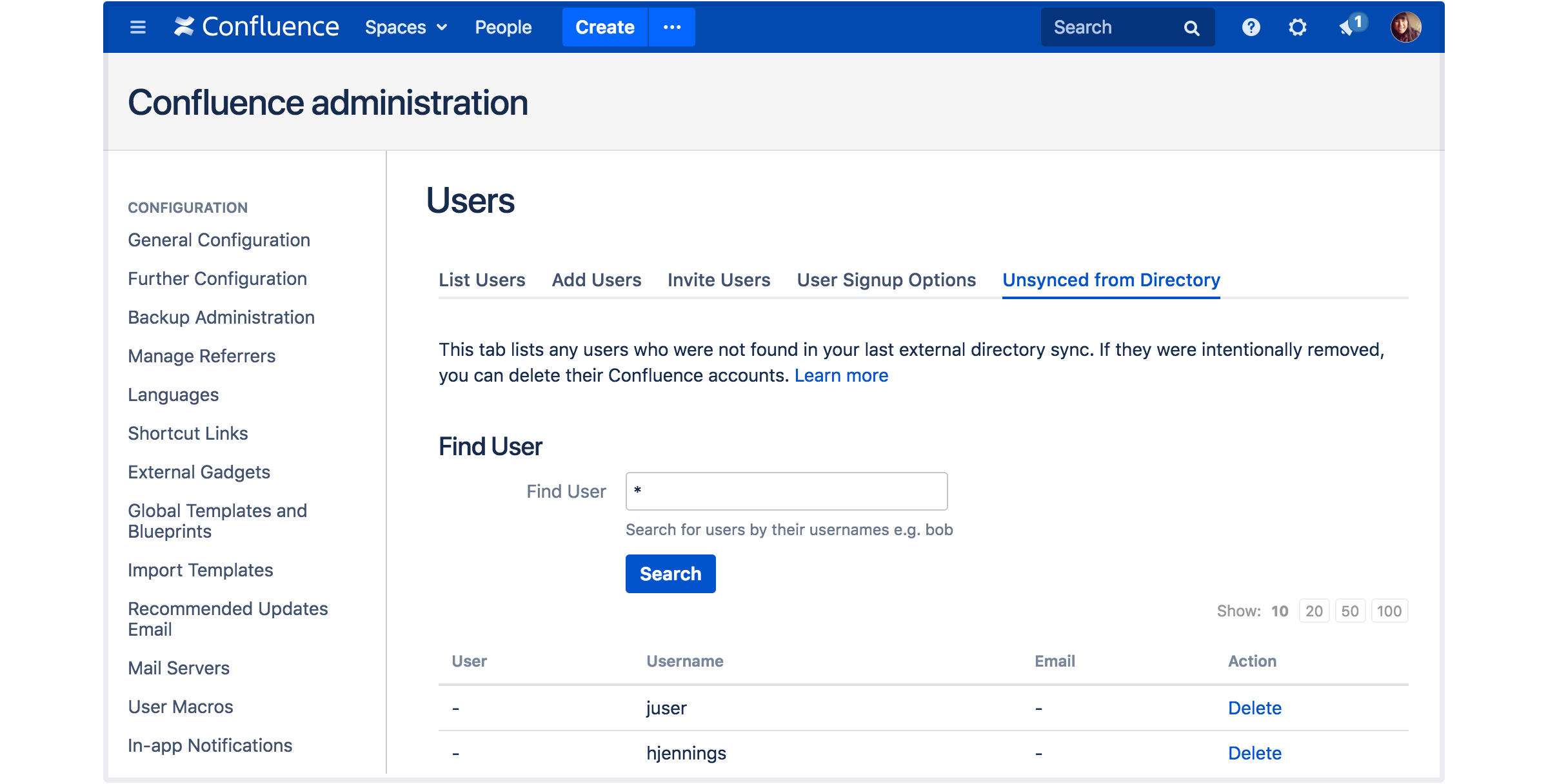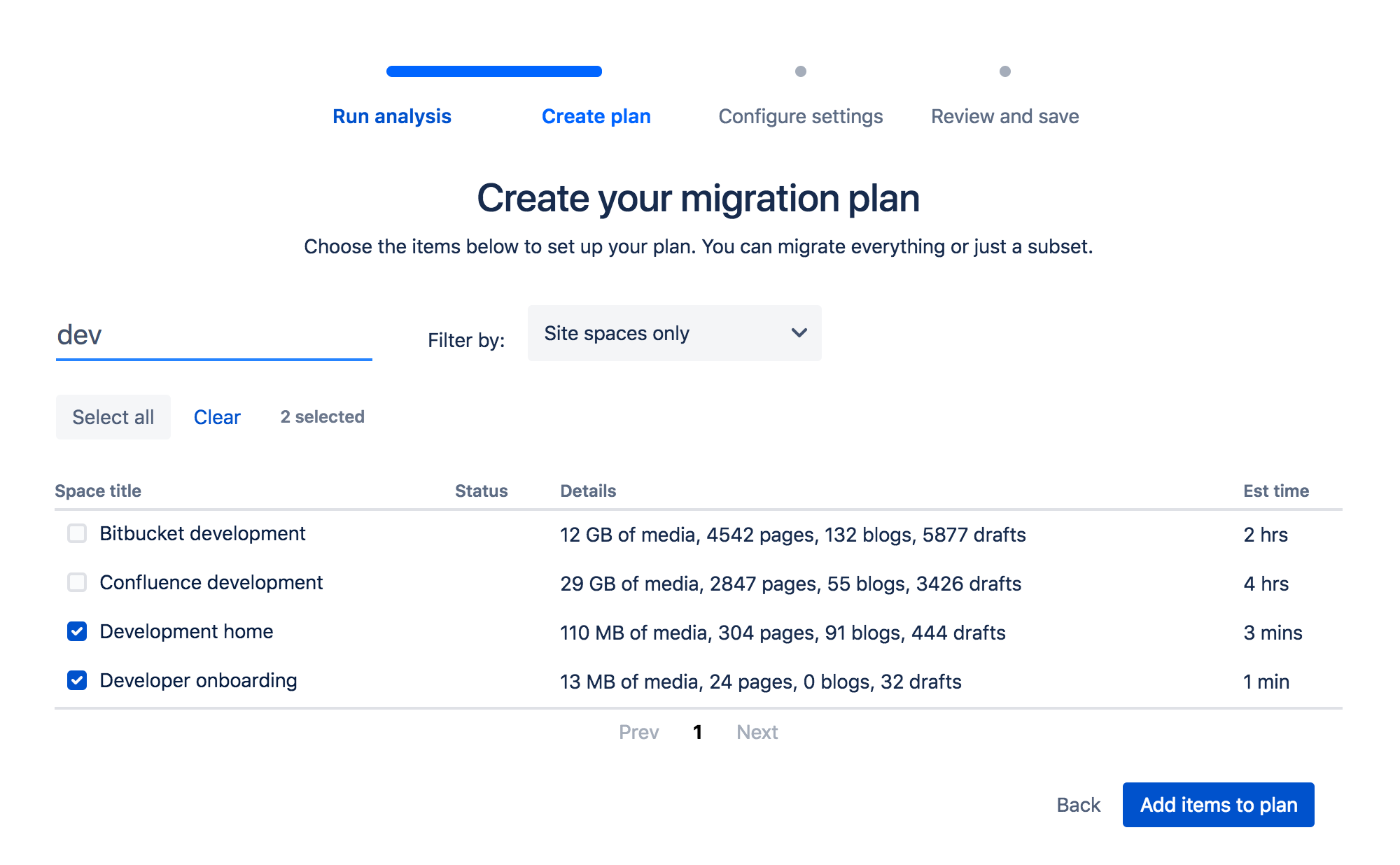Confluence 6.13 Release Notes
4 December 2018
We're excited to present Confluence 6.13.Highlights
- Run Confluence with AdoptOpenJDK 8
- Supporting your GDPR efforts
- PDF export improvements
- Moving to the Cloud has never been easier
- Infrastructure recommendations
- End of year Long Term Support release roundup
- Resolved issues
- Get ready to upgrade
.
More
Read the upgrade notes for important info about this release and see the full list of issues resolved.
Thanks for your feedback
More than 770 votes satisfied!
Confluence Server and Data Center 6.13 is a Long Term Support release
This means we'll provide bug fix releases until 6.13 reaches end of life, to address critical security, stability, data integrity, and performance issues.
Check out the Confluence 6.13 change Log for a roll-up of changes since 6.6.
Update: We have extended the end of life date for Confluence 6.13. We'll continue to make 6.13.x bugfixes available until the release of the next LTS (around April - June 2021). This gives you the flexibility to upgrade to Confluence 7.4 LTS, or wait and upgrade to the latest LTS in 2021.
Run Confluence with AdoptOpenJDK 8
Oracle will stop providing public updates for Oracle JDK 8 in January. This means that only Oracle customers with a paid subscription or support contract will be eligible for updates.
In order to provide you with another option, we now support running Confluence 6.13 with AdoptOpenJDK 8. AdoptOpenJDK is free to use, and provides regular maintenance and security updates. Paid support for AdoptOpenJDK is also available from organisations such as IBM.
We'll continue to support running Confluence with Oracle JDK / JRE 8, and also plan to introduce support for Java 11 in a future release.
Supporting your GDPR efforts
General Data Protection Regulation (GDPR) compliance is front of mind for most organisations right now, and we know many of you are keen to adopt best practices, even if you aren't subject to the EU regulation.
In this release we've added the ability to permanently delete a user account and anonymise much of the personally identifiable information associated with it. There are some limitations, but we think this will be a useful tool for many organisations.
Delete accounts, wherever they're managed
Deleting a user account is very straight forward. If Confluence can write to the directory they're stored in, all you need to do is head to User Management, look up the user and click Delete.
If Confluence can't write to the directory, or if they're present in several directories, it's a two-step process. Remove them from all external directories, then head to the new Unsynced from Directory tab in User Management, and delete them from there.
When you delete an account, Confluence will:
- remove their account, profile picture (avatar), and personal information
- replace their full name and username with an anonymised alias
- reindex any content they've contributed to or been mentioned on, so their name doesn't appear in search results.
What happens to people's content after they're deleted?
Deleting a user account does not remove any pages, comments, or other Confluence content. We also don't delete their personal space, as this may contain content owned by your organization.
This means that there will be some additional work to do after their account has been deleted to remove their personal space, and locate any references to the person in free text, or stored by third party apps or Synchrony in the database.
How deleted accounts appear to other people in your site
When an account is deleted, the full name is replaced with an alias like 'user-12345' in places including the dashboard, page history, @mentions, and macros. The username is replaced by a user key (a unique string of characters).
The alias stays the same throughout the site. This means that people can see that pages and comments were made by the same person, but not the identity of that person.
Delete vs disable an account
In most cases, when someone leaves your organisation or no longer needs access to Confluence, the existing process to disable a user is adequate. Their name remains attached to their content, and you can easily re-enable their account if they return.
PDF export improvements
If you regularly need to create PDFs of your content, you'll be pleased to know that we've resolved a bunch of PDF export bugs, and made several visual improvements to our PDFs. Some highlights:
- Tables better match their Confluence counterparts, no longer filling the whole width, or forcing the columns to be equal width.
- Headings have been refreshed, with more consistent sizing.
- Ugly ducklings like the recently worked on, status, and tip macros now display more consistently.
- Each Confluence page starts on a new PDF page, making your documents easier to read.
- Long words and strings now wrap correctly.
We've kept the styling of the PDF plain and simple, giving you the perfect blank canvas to add your own style and flair, via the PDF stylesheet.
Moving to the Cloud has never been easier
The Cloud Migration Assistant for Confluence is now bundled with Confluence 6.13. If your team is currently considering a move to Atlassian Cloud, the Migration Assistant will make your day.
Migrate spaces at your own pace
Use the Migration Assistant to analyse the amount of content in your current site, and make plans to move spaces to your new cloud site.
It's up to you which spaces to migrate, and when. For example you may choose to migrate a few spaces relating to a particular project first, or migrate the spaces belonging to teams in a particular location, to limit disruption to these teams during their working hours.
You're in control. You choose which spaces to migrate, when to run the plan, and can monitor the migration progress in real time. While one space's data is being uploaded, the next space's data is being exported from your database.
Securely transfer your data
We take your security seriously. There's no need to make changes to your firewall to allow incoming traffic. Just allow outgoing traffic from your Server site to our migrations.atlassian.com service and your new cloud site, and you'll be off and running.
Good to know
The Migration Assistant is an app, so its capabilities, and required Confluence versions will change over time. Head to the Marketplace listing for a summary of recent changes.
As at the release of Confluence 6.13, the Migration Assistant only transfers spaces. It doesn't migrate your users. We recommend populating your new cloud site with users first, so people are seamlessly reunited with their content. It is not yet suitable for migrating Confluence Data Center sites.
Curious? Head to Cloud Migration for everything you need to decide, plan and migrate your Confluence Server site.
Infrastructure recommendations
Running a large Confluence site and want to make sure your current infrastructure is up to the task?We recently ran a series of performance tests on a typical large-sized Confluence instance. We designed these tests to get useful, data-driven recommendations for your deployment's application and database nodes. These recommendations can help you plan a suitable environment, or check whether your current instance is adequate for the size of your content and traffic.
Head to Infrastructure recommendations for enterprise Confluence instances on AWS to check out our recommendations, including full details of our methodology.
End of year Long Term Support release roundup
It's been 12 months since Confluence 6.6 was designated our first Long Term Support release so let's look at how it compares to standard releases this year.
We made a new 6.6.x bug fix version available about every 4 - 6 weeks, and backported many important stability and performance fixes from later releases.
Although most of you go for the latest and greatest Confluence version, many of our biggest customers chose the Long Term Support release this year. In fact more Data Center customers chose to run Confluence 6.6 than any other version.
Organizations choose the Long Term Support release for different reasons. For some, its the chance schedule regular minor version upgrades throughout the year, and for others it's the ability to react quickly to a serious issue or vulnerability, without the overhead of upgrading to a new feature version.
Whether you choose a Long Term Support release or a standard release, always remember to grab the most recent bug fix version to make sure your Confluence is the best it can be.
See you next year!
Resolved issues
For full details of bugs fixed and suggestions resolved, head to Jira.
Confluence 6.13 is affected by the following security issues: CVE-2019-3395 and CVE-2019-3396, CVE-2019-3398, CVE-2019-3394, CVE-2019-15006, and CVE-2021-26084.
When upgrading, we recommend upgrading to the most recent 6.13 bugfix version, which is 6.13.23 or the most recent 7.x LTS version.
Issues resolved in 6.13.23
Released on 23 August 2021
Issues resolved in 6.13.21
Released on 04 May 2021
Issues resolved in 6.13.20
Released on 17 March 2021
Issues resolved in 6.13.19
Released on 03 February 2021
There are no issues to display for this release.
Issues resolved in 6.13.18
Released on 26 November 2020
Issues resolved in 6.13.17
Released on 20 October 2020
Issues resolved in 6.13.15
Released on 19 August 2020
Confluence 6.13.14 was an internal release
Issues resolved in 6.13.13
Released on 07 July 2020
Issues resolved in 6.13.12
Released on 28 May 2020
Issues resolved in 6.13.11
Released on 18 March 2020
Issues resolved in 6.13.10
Released on 12 December 2019
Issues resolved in 6.13.9
Released on 18 November 2019
Issues resolved in 6.13.8
Released on 29 August 2019
Issues resolved in 6.13.7
Released on 26 August 2019
This version contains a known issue that affects people running Confluence on Windows using the bundled JRE. See CONFSERVER-58784 - Getting issue details... STATUS for details and a workaround, or upgrade to 6.13.8 or later.
Issues resolved in 6.13.6
Released on 26 June 2019
Issues resolved in 6.13.5
Released on 03 June 2019
Issues resolved in 6.13.4
Released on 05 April 2019
From 6.13.4 URLs must be added to Confluence's whitelist before they can be shared using the Share a link blueprint. This is to prevent people from accidentally or maliciously sharing links that may pose a security risk to your site.
Issues resolved in 6.13.3
Released on 05 March 2019
Issues resolved in 6.13.2
Released on 31 January 2019
Change to bundled Java vendor
From this version onwards we bundle the AdoptOpenJDK JRE rather than the Oracle JRE. This change will only impact people who run Confluence using the bundled JRE (which is available when you install using the installer)
Both Oracle and AdoptOpenJDK are supported, so if you would prefer to use the Oracle JRE, see Change the Java vendor or version Confluence uses.
Issues resolved in 6.13.1
Released on 17 January 2019
Issues resolved in 6.13.0
Released on 04 December 2018
Get ready to upgrade
Before you upgrade, check out the Upgrade Notes for important changes in this release, then follow the usual upgrade instructions to upgrade your site.
Been a while since your last upgrade? Check out our upgrade matrix for a bird's-eye view of the most important changes since Confluence 6.0.
Don't forget to renew your software maintenance. Renew now
Credits
Our wonderful customers...
You play an important role in making Confluence better. Thanks to everyone who participated in interviews with us, made suggestions, voted, and reported bugs !






